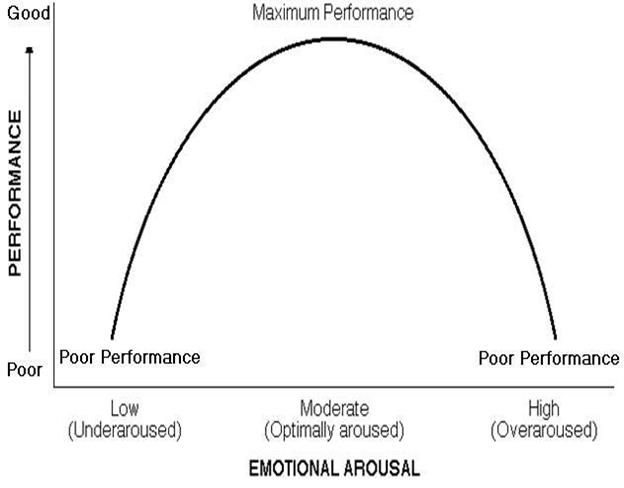Common Management Errors (19)
Xix) Inverted U Concept
. Not understanding the "inverted U" concept, ie more is not necessarily better; it can make things worse. It is all about limits. It is linked to the s-curve (see earlier). It has 4 stages, ie
- stage 1 (relation is linear);
- stage 2 (relation levels off, ie area of diminishing marginal returns);
- stage 3 (extra resources have no effect on the outcome);
- stage 4 (more resources are counterproductive).
In graphical terms it looks like
Some examples of "inverted U", ie arousal v. performance, ie right amount of arousal maximises performance but too much arousal can reduce performance; some examples
The same strategy that works well at first stops working after a certain point. Some examples
i) happiness v. income, ie in USA happiness improves with initially increasing income but peaks at US $75,000 and then decreases
ii) arousal v. performance, ie right amount of arousal maximises performance but too much arousal can reduce performance
iii) alcohol v. health, ie a small amount of alcohol is good for you, while too much is bad for your health
iv) jogging, ie gentle jogging is good for your health, but if done excessively it has a negative impact on the immune system, hormonal system (lack of testosterone causes of a lack of sex drive, slow muscle recovery and lack of energy) plus jogger's knee, ie a constant ache just below the kneecap
v) stress, ie emotional arousal is another name for stress.
For each activity, the aim is to get the right amount of stress so that you are in the zone of maximum performance; sometimes called the 'sweet spot' or 'in the flow'. In this zone, you are motivated, enthusiastic, challenge, excited, having fun, everything seems effortless, etc. If you don't have enough stress to motivate you, you become bored. On the other hand, if you have too much stress, you don't achieve much, ie like 'spinning wheels'.
(source: Brad Johnson 2020)
NB 'Being in the zone' when you are tapping in to all parts of your brain, like logic and problem solving, creativity and imagination. It helps you break out of the status quo mindset
It will boost self-esteem and happiness, encourage more engagement and improve well-being.
On the other hand, over the course of a lifetime, happiness generally follows a U-shaped curve, ie it is high when you are young, dips in middle age and rises again in later years. Middle age tends to be the time when obligations to career and family are at their peak, ie the stress of children-rearing and long hours at the office can have a negative impact on well-being
Additional research (Christopher Ingraham, 2015) has shown that married people are generally happier in middle age than unmarried people, especially if it is a "good marriage", ie where spouses regard each other as their best friends

